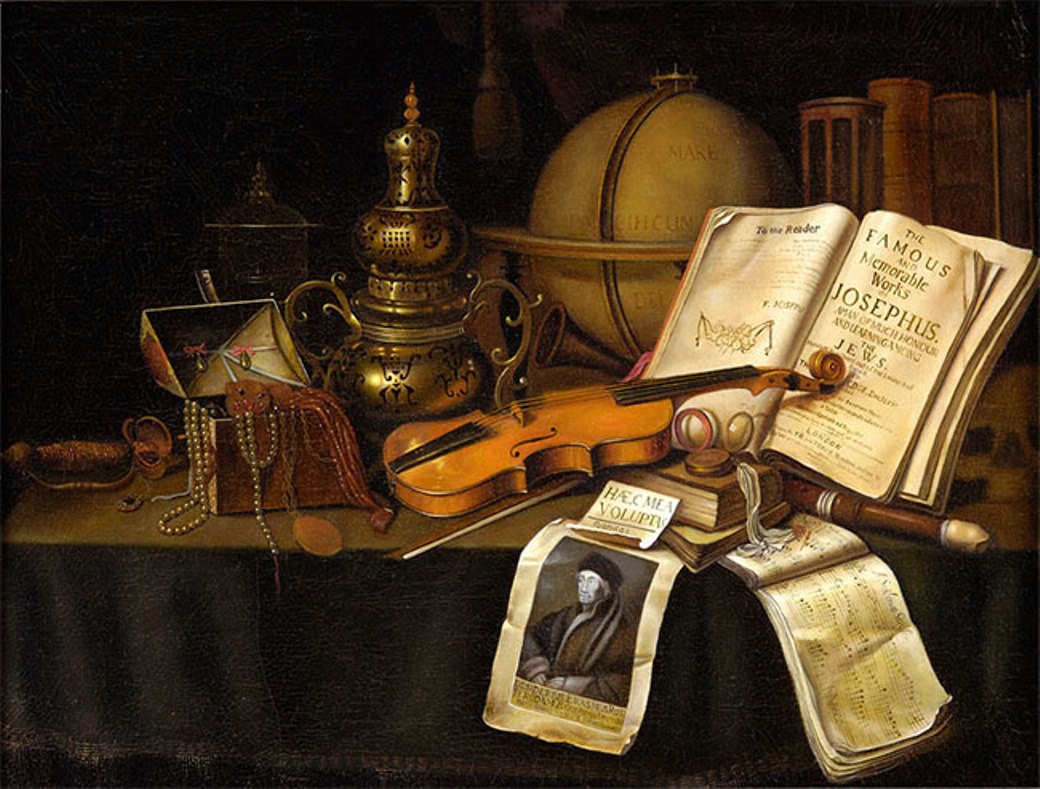Scholarly Still Life

Scholarly Still Life
Scholarly Still Life was a genre of painting that incorporated symbolic objects designed to remind the viewer of their mortality and the worthlessness of worldly goods and pleasures. This style, part of the broader category of still-life painting, often overlaps with the theme known as Vanitas. Originating in the Netherlands during the 17th century, these artworks feature elements like skulls, fading flowers, soap bubbles, and overturned vessels, each serving as a memento mori.
Artists of this genre meticulously depicted items with scientific accuracy and rich symbolism. Scholarly still lifes are not merely representations of inanimate objects; they are thoughtful compositions that convey messages about life, death, and the pursuit of knowledge. Famous examples of this genre include paintings by Harmen Steenwyck and Pieter Claesz, whose works are displayed in prominent museums such as the Louvre and the Rijksmuseum.
Vanitas paintings serve as a fascinating subcategory of scholarly still lifes, combining artistry with philosophical introspection. These pieces challenge viewers to consider the transient nature of earthly achievements and possessions. The intricate detail and deep symbolism in these paintings make them highly valued among collectors and experts in art and antiques.
Stay informed about the latest in Scholarly Still Life and Vanitas artworks. Sign up for updates on new discoveries, sales, and auction events related to these poignant and thought-provoking genres. Join us in exploring the depth and beauty of art that reflects on life and its impermanence.
| Country: | Europe, The Netherlands, Western Europe |
|---|---|
| Start of the period: | XVII century |